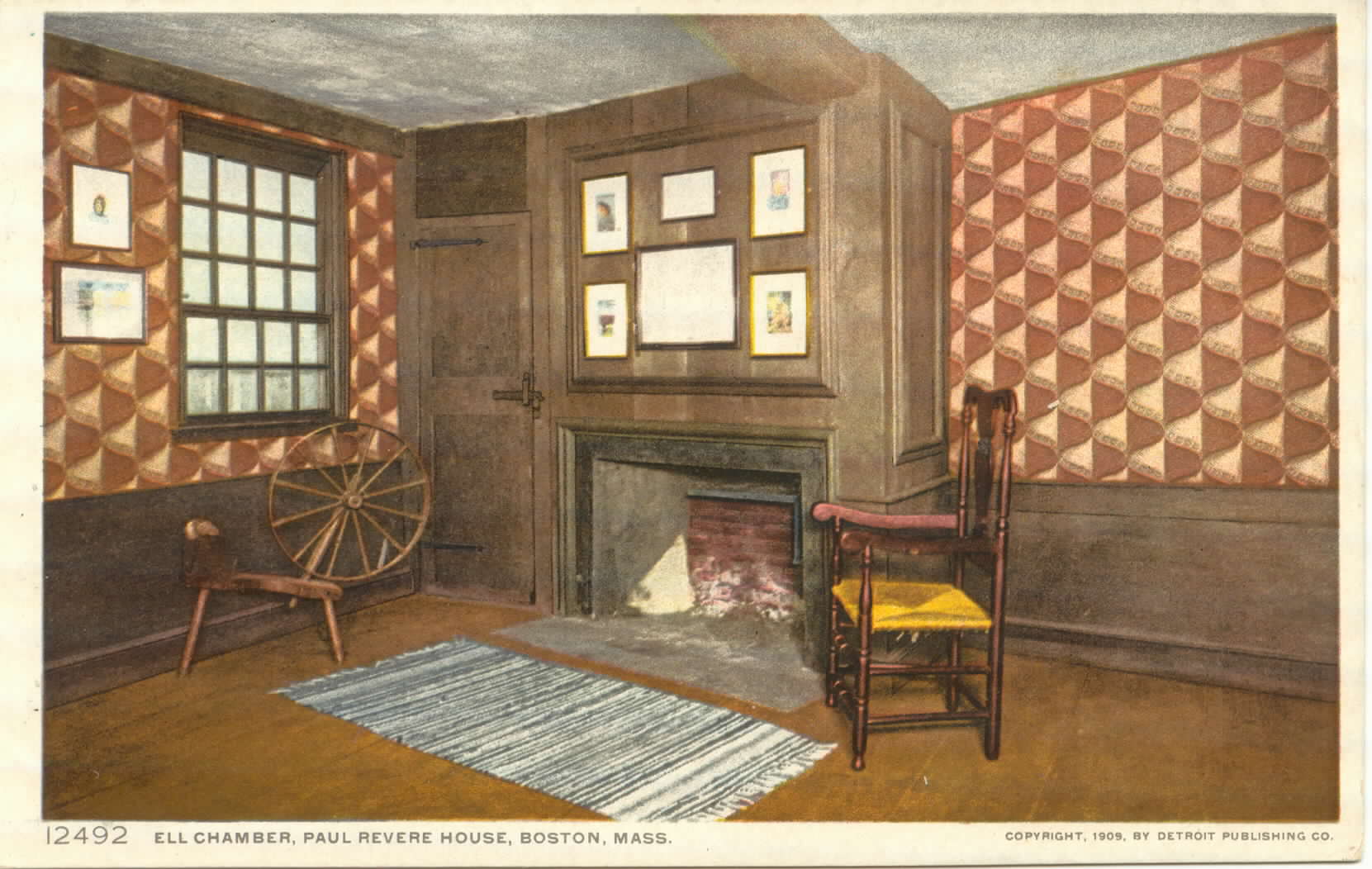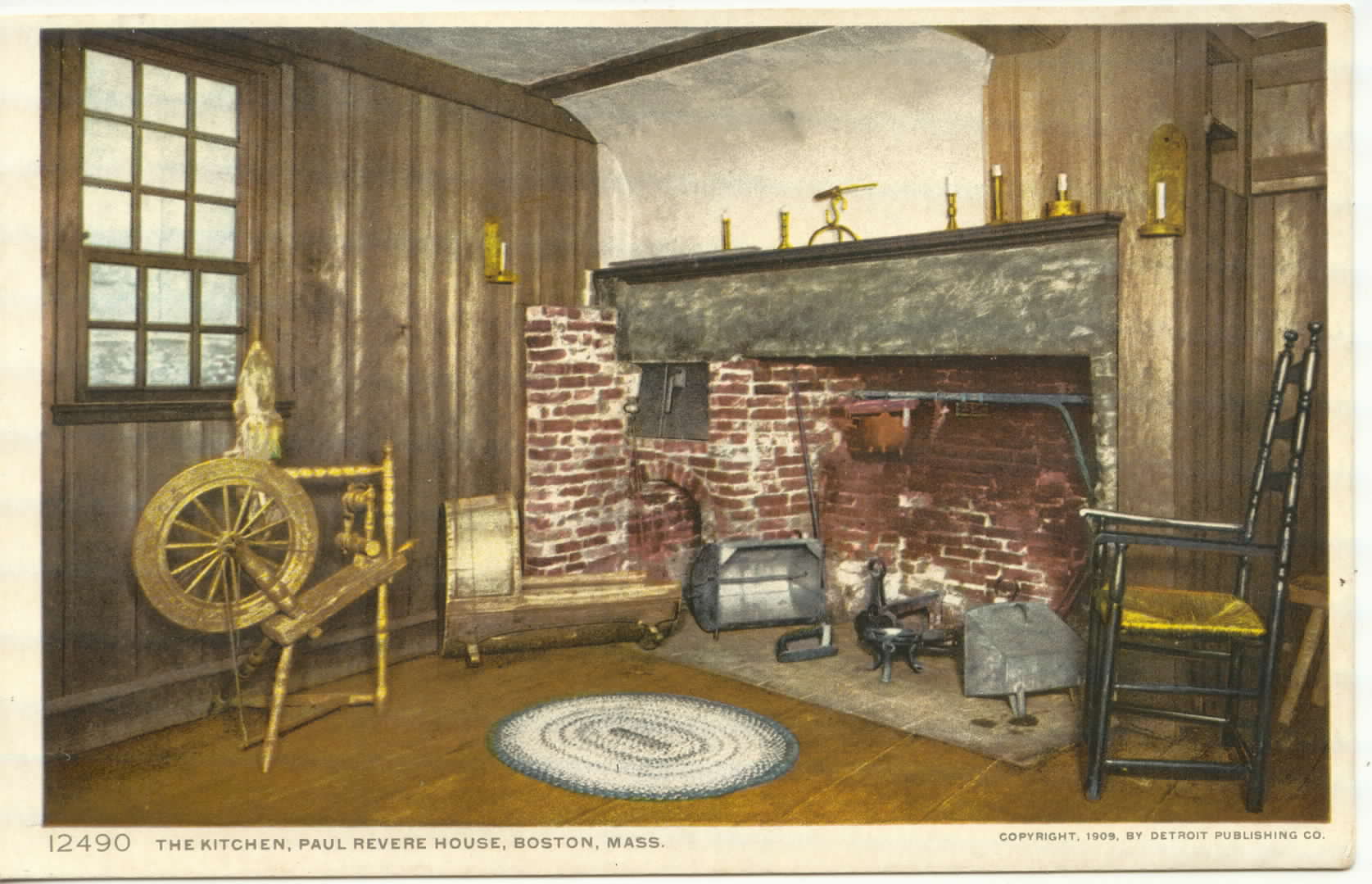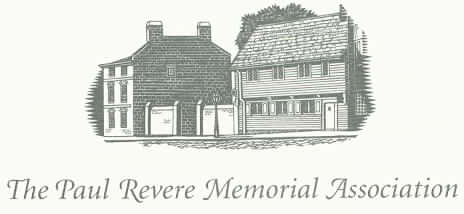

Paul Revere Memorial Association
Our Mission
is to inspire a deeper appreciation for the relevance of American history by sharing the life, legacy, craftsmanship, and iconic home of artisan, businessman, patriot, and citizen Paul Revere.
This is achieved by sharing meaningful and remarkable educational experiences with all of our audiences, being thoughtful caretakers of our three significant historical properties and our collections, and serving as a community resource. Our historic buildings provide a unique bridge from Boston’s Revolutionary story to its 19th century immigrant history.
The iconic artisan Paul Revere and his home embody the cultural heritage and historical memory of Boston. Our programs reflect our commitment to richer interpretation through engaging educational presentations, a broadened thematic base, active collaborative programming, and an expanded notion of audience with outreach to underserved groups.
We fulfill our mission by offering educational programs for all ages – walking tours, concerts, living history presentations, publications, lectures, school programs, teacher workshops and much, much more. We maintain an important collection of Revere-made objects, household artifacts, materials commemorating the midnight ride and Revere’s legacy, objects related to the history of the North End community, and items related to Revere’s life and work. We welcome donations of appropriate artifacts.
The Association is responsible for the ongoing care and long-term preservation of our historic buildings – the Paul Revere House, the Pierce/Hichborn House, and our Education and Visitor Center in Lathrop Place. Maintenance projects and capital restoration efforts require that funds be raised on an annual basis.
The Association supports its restoration efforts, cares for its collection, and funds daily operations and programs through earned income, annual contributions, and grants.
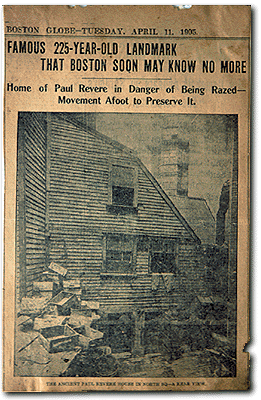
Our History
The Paul Revere Memorial Association was founded to restore and operate the Paul Revere House. The house, sold by Paul Revere in 1800, served as a boarding house, shops and businesses, and tenement apartments for the following century.
Years of hard use took their toll, and the house fell into disrepair. In 1905, the Milton Record described it as…
“a quaint dilapidated wooden house with queer chimneys and overhanging upper story. Looking into the hall through the open doorway, may be seen layers of variegated wallpapers. Thus the oldest building in Boston gradually sinking into utter ruin.”
Even in this state, the house was still something of a local landmark and tourist attraction. However, the neighborhood and the house’s condition made it a candidate for demolition. In 1895 the Paul Revere Chapter of the Daughters of the American Revolution installed a historical plaque on the house in the hopes of bringing the building special recognition. The attention from the DAR did not result in immediate action and the house’s eventual restoration was still unclear. In 1901, a small fire erupted in the basement when an “unwisely hung” kerosene lamp being used to ripen bananas set fire to a cellar beam. Though caught in time, the incident raised considerable concern about the uses to which the home was being put and the potential for a devastating accident.
Still, it wasn’t until December of 1902 that Revere descendant John Phillips Reynolds Jr. (Paul Revere’s great-grandson) purchased the property. Reynolds bought the building for $12,000 from Sidney Squires, delaying plans to tear it down and replace it with a tenement apartment.
For the next three years, “the old house … hovered between salvation and destruction.” Actually, little could be done in these years because, according to the terms of the sales agreement recorded in the deed, Reynolds was required to allow Louisa Santosuosso, who operated a vegetable and fruit business on the first floor, to finish out her lease. A few weeks before her lease expired on April 30, 1905, a group of Revere family members, preservationists, local officials, and representatives of patriotic associations banded together to form the Paul Revere Memorial Association to raise the $30,000 needed to purchase the house from Reynolds and to restore it. Their plan:
“to secure as a permanent patriotic memorial the house in which Paul Revere lived on North Square, Boston. The alternative to its restoration is destruction, the effect of which would be to deprive Boston and the whole country of an historical relic which even in its present form has been visited by thousands of patriotic Americans.”
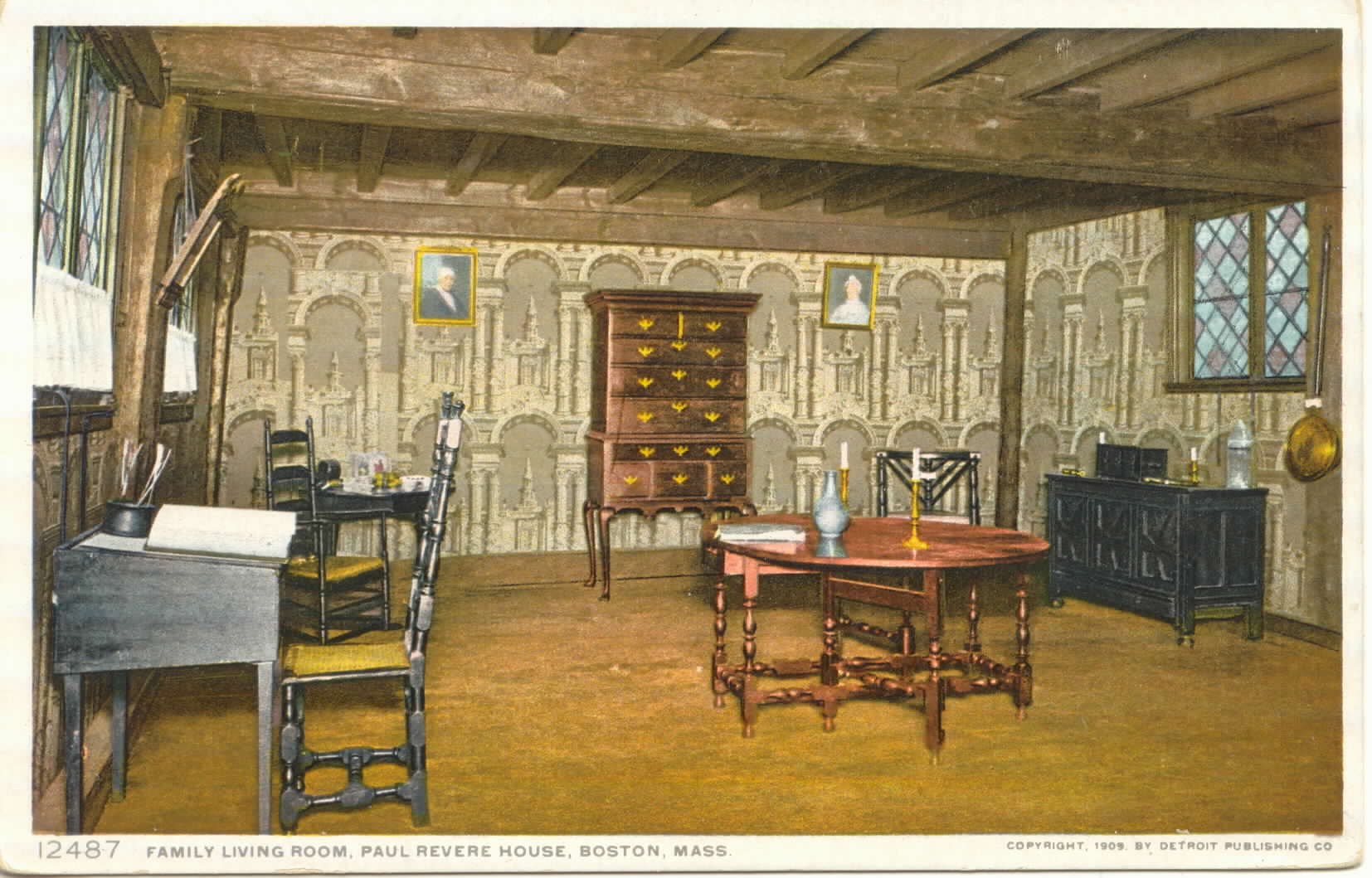
The fundraising began in earnest. The New York Sun suggested, “If everyone who read Longfellow’s poem on Paul Revere’s ride will contribute 5 cents, the subscription will soon be closed.” Then when contributions slowed, they bemoaned the loss of other important Boston landmarks – in particular the Hancock House destroyed in 1863 and cited the value of historic sites to the economy. “Moreover we need them as a sound business investment, adding by just so much to the attractions of our city and state in the eyes of tourists, travelers, and conventions of all kinds.”
On December 11, 1906, John Phillips Reynolds Jr. sold the Revere House to several trustees, who in turn on May 1, 1907, sold the house to the Paul Revere Memorial Association. On May 4, 1907 the Paul Revere Memorial Association was officially incorporated as a non-profit association dedicated to the preservation of the house and the memory of Paul Revere.
Pauline Revere Thayer, a great-granddaughter of Paul Revere, and cousin of John Phillips Reynolds, Jr., was also a key figure in the early years of the Association and the restoration of the house. She lost her father, Paul Joseph Revere and her uncle Edward H.R. Revere in the Civil War.
In March 1907, the last tenants moved out and restoration work by I.M. Bogart Co began in earnest under the direction of architect Joseph Chandler. By the winter of 1907, all but $4000 of the total needed had been pledged. This final amount was provided by Pauline Revere Thayer, a Revere descendant, and her husband Nathaniel. The house open to the public on April 18, 1908. Quickly it became one of the most popular attractions in the city.

